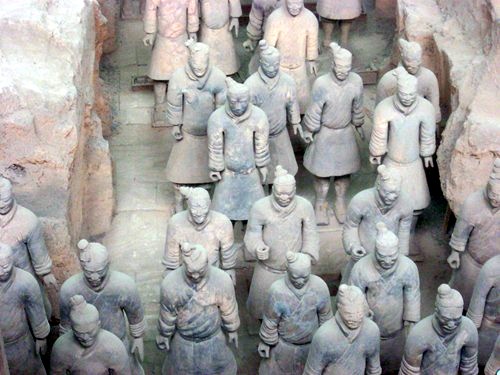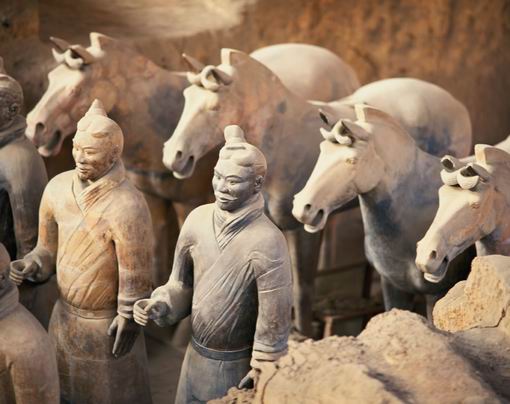More from the I CHing
Kan (Darkness)
Kan is a pit. it can be interpreted as falling. wilhelm translates kan as abysmal and blofeld as abyss. in this book the word darkness is used. the ancient ideograph selected for this gua is a very old and beautiful form. the left half of the ideograph selected for this gua is a very old and beautiful form. the left half of the ideograph is a symbol for earth. the right half is made up of two parts. the upper portion depicts a person standing on one foot with the other foot off the ground, which indicates that the person is falling. directly underneath one foot, there is a vertical line symbolizing a falling movement. the lower portion of the ideograph looks like apit. we have here the image of someone falling into a pit. the meaning of kan is two-fold, either a pit or falling. in the later version of the ideograph, it should be noted, the picture of the pit was left out.
The central theme of the gua is falling but not drowned; in danger but not lost. maintain your confidence: soothe your mind. with assurance and faith, caution and trust, you can pass through any difficult situation. both abysmal and abyss carry the sense of being bottomless. kan is a pit, but it is not bottomless. there is hope.
kan is made up of two primary gua, water above and water below. in ancient times, the chinese lived inland; they were not a sea-faring people. for this reason, water was associated with difficulty or danger. according to the system of the five elements, the colors of water is blue-black.there is no light in a pit. thus, the meaning of kan can also be interpreted as falling into darkness
Kan (Darkness)
Kan is a pit. it can be interpreted as falling. wilhelm translates kan as abysmal and blofeld as abyss. in this book the word darkness is used. the ancient ideograph selected for this gua is a very old and beautiful form. the left half of the ideograph selected for this gua is a very old and beautiful form. the left half of the ideograph is a symbol for earth. the right half is made up of two parts. the upper portion depicts a person standing on one foot with the other foot off the ground, which indicates that the person is falling. directly underneath one foot, there is a vertical line symbolizing a falling movement. the lower portion of the ideograph looks like apit. we have here the image of someone falling into a pit. the meaning of kan is two-fold, either a pit or falling. in the later version of the ideograph, it should be noted, the picture of the pit was left out.
The central theme of the gua is falling but not drowned; in danger but not lost. maintain your confidence: soothe your mind. with assurance and faith, caution and trust, you can pass through any difficult situation. both abysmal and abyss carry the sense of being bottomless. kan is a pit, but it is not bottomless. there is hope.
kan is made up of two primary gua, water above and water below. in ancient times, the chinese lived inland; they were not a sea-faring people. for this reason, water was associated with difficulty or danger. according to the system of the five elements, the colors of water is blue-black.there is no light in a pit. thus, the meaning of kan can also be interpreted as falling into darkness
 Anybody got any books to recommend on world philosophies? preferably African or Asian
Anybody got any books to recommend on world philosophies? preferably African or Asian



